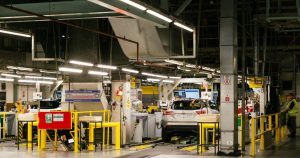Maintaining an efficient freezer is crucial for minimizing energy consumption and reducing electricity bills, especially given the current high energy prices. A common culprit of inefficiency is frost buildup, which acts as an insulator, forcing the freezer to work harder to maintain the desired temperature. This can add as much as £150 annually to energy costs. However, a simple and inexpensive solution is readily available: a freezer scraper. A basic scraper, often found for around £4, can be used to regularly remove frost, keeping the freezer running optimally. Alternatively, de-icer sprays can be purchased, although a scraper offers a reusable, cost-effective, and environmentally friendly option. The recommended frequency for defrosting is every six to twelve months, or whenever the frost layer reaches approximately half a centimeter in thickness.
Beyond scraping, several other practices can enhance freezer efficiency. Ensuring the door seals are airtight is vital for preventing cold air leakage. A simple test involves placing a piece of paper in the door and closing it. If the paper stays put, the seal is likely good. If it falls or slides out easily, the seal may need replacing. Replacement seals are readily available online for a relatively small cost. Cleaning the seals regularly is also important. This can be achieved using a cloth wrapped around a chopstick to reach into the crevices. The location of the freezer also plays a role. Avoid placing it near heat sources like radiators, ovens, dishwashers, or in direct sunlight, as this will make it work harder to stay cool.
The manner in which food is handled and placed in the freezer can also impact its efficiency. Allowing hot or warm food to cool completely before freezing is essential. Freezing large quantities of food at once should also be avoided, as this can raise the internal temperature and force the freezer to work overtime. Ideally, no more than 10% of the freezer’s volume should be filled with new items at any given time. Investing in a freezer thermometer is another valuable step. This allows for accurate temperature monitoring, ensuring the freezer maintains the optimal -18°C required for food safety without overcooling. Many affordable thermometers are available online and in stores.
Maintaining an optimal freezer capacity is also important for efficiency. A freezer that is too full hinders cold air circulation, while a freezer that is too empty necessitates more energy to maintain the low temperature. Aiming for a capacity of approximately 75% full is ideal. If insufficient food is available to maintain this level, filling empty spaces with items like water bottles can help. Organizing the freezer contents is another simple yet effective way to improve efficiency. Categorizing and labeling food items minimizes the time the door is open, further reducing energy waste and maintaining a consistent internal temperature.
Replacing an older freezer with a more energy-efficient model can lead to significant long-term savings. Modern A-rated appliances consume considerably less energy than older models. While the initial investment might seem substantial, the reduced running costs over the appliance’s lifespan often compensate for the initial outlay. Energy comparison websites can provide valuable insights into the energy consumption of various models, helping consumers make informed decisions. It’s important to consider the long-term cost savings when making a purchase.
For those struggling with energy bills, various assistance programs and resources are available. Energy suppliers often offer payment plans and grants to eligible customers facing financial hardship. Additionally, the Priority Services Register (PSR) provides support to vulnerable households, offering advance notice of potential power outages, free gas safety checks, and other forms of assistance. Contacting your energy supplier or exploring available resources can help identify potential avenues of support. These combined strategies of efficient freezer management and exploring available assistance programs can significantly reduce energy consumption and help manage the financial burden of rising energy costs.











